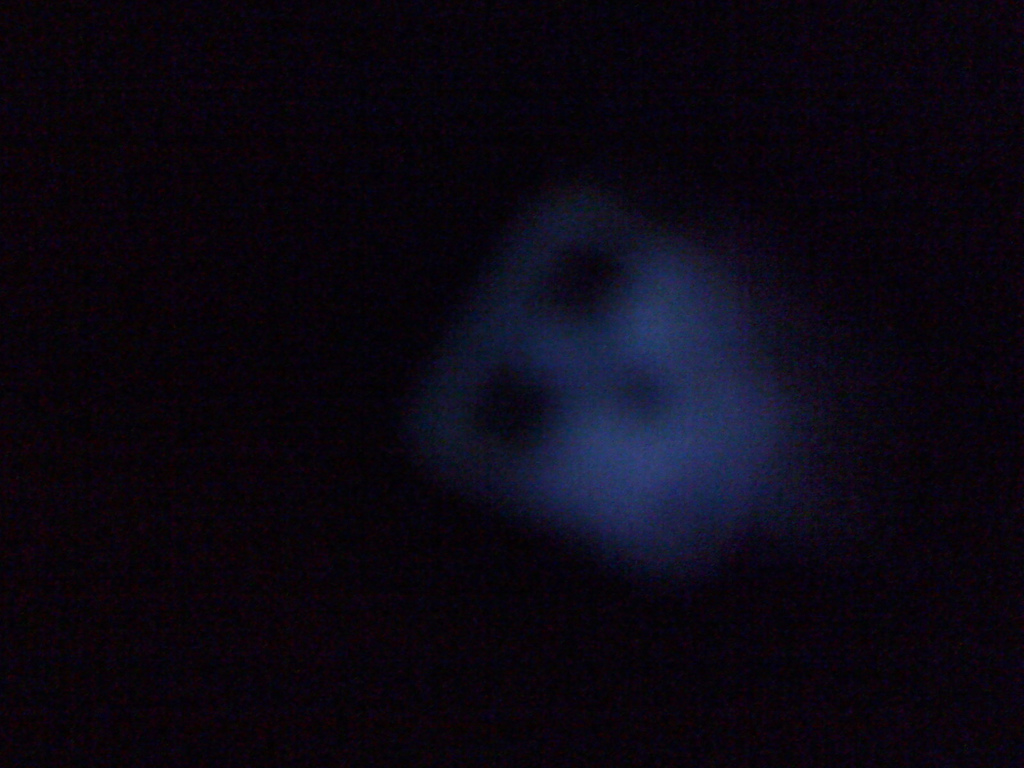The Bit Too Tidy Ghost Story of "Dear David"
Every ghost story is a good story.

Image: Yosomono via Flickr
I’m skeptical of the authenticity of the ongoing Twitter ghost story “Dear David” that’s currently being written (lived?) by Manhattan-based author and illustrator Adam Ellis.
It’s not because I don’t believe in ghosts, although I’d like to. And it’s not because it’s been hyped a few times by the blog for Blumhouse Productions, the innovative film company with a knack for parlaying low-budget effects into monster hits (Paranormal Activity, Insidious, and Sinister), the kind of joint that’d be behind just this sort of thing. And it’s not because Ellis has said anything particularly incriminating, either in his threaded tweets about the ghostly phenomenon haunting his apartment, or in a quick email Q&A I had with him.
(“It’s all real!” he wrote back when I asked. “I obviously try to narrate it in a way that’s readable and interesting for my followers, but it’s all real stuff that’s happening. If it was fake I’d probably update more than once a week, lol.”)
The reason I question that it’s really happening is because the story’s being told a little too perfectly. Which is actually not bad! It’s something to be proud of! And, to the point of this essay, it allows an opportunity to admire and analyze how the story’s being delivered, as opposed to delving into “gotcha” “journalism” or frame-by-frame debunking. Who has the time, and who cares. So, I’m not going to retell the story’s plot—you should’ve already clicked the link, but here it is again—but focus on how it’s being told.
It’s a series of tweets. Some are single ones, some have been threaded so that they’re beats of the single narrative. For the sake of clarity, I’m just going to call every one of these separate plot points—single tweet or thread—an “episode.”
The first thing to look at are the threaded tweets, the ones that tell of more in-depth and dramatic events plaguing Ellis. Within the threads are evidence of a strong structural awareness, wherein every tweet ends on a cliff-hanging beat, rather than those clumsy “time for some game theory” all-night braindumps that are just longer thoughts split up, 140 (or, I guess, sometimes 280) characters at a time. Like so:
It's happening again. (thread)
— Adam Ellis (@moby_dickhead) September 6, 2017
I was going over the feed from this weekend, and noticed some weird stuff.
— Adam Ellis (@moby_dickhead) September 6, 2017
Every tweet ends on a beat, however slight. The TV show “Lost” was particularly good at this, where they forced (sometimes clumsily) a cliffhanger at the end of every episode, at the end of every commercial break, even at the end of every scene.
There’s also been a consistent escalation of “spooky” bits on an “episode by episode” basis. As we’ve learned through the meta-commentary in the Scream series, scares and gore have to be bigger and better to keep the audience interested. In “Dear David,” the bigger/better has been an escalation in the media being used. Sort of like how each subsequent chapter in the Paranormal Activity franchise literally added a shot that built off the previous; static cameras begat home security multi-room set-ups begat the rotating fan camera begat, well, I stopped there.
In addition to the written story in the tweets, the August 7th episode added an illustration and a photo (of cats). On August 8th, there were photos (again, of cats) and short videos. Following that came a SoundCloud recording, photos of Polaroid photos, a video of Adam taking Polaroid and then the photos developing in real time, a screenshot of his caller ID, etc. Most recently, and most technologically advanced, Adam’s introduced a motion-triggered internet-connected video camera placed in his living room in order to “keep an eye on the cats.” (Also: spooky shit.) Ellis is quickly going through every potential storytelling medium available to use on Twitter, and he’s doing it in the right storytelling order.
While the channel where the program is broadcast—Ellis’ Twitter account—is consistent, the timing is not. Broadcast schedules have long shifted away from one-time-only appointments around the radio hearth for the latest episode of “The Shadow,” through the time-shifting era from VCR to TiVo, into whatever disconnected pop culture intake we’re in now, where everyone is clustered both in content and consumption. But the “Dear David” episodes are delivered at unpredictable junctures with no pattern (the first episode tweet thread began at 8:35 a.m., later ones largely take place in the evening).
But that doesn’t matter. When they’re broadcast, they’re immediately seen by viewers who happened to have “tuned in” (either via alert, the luck of the timeline, or some algorithm) during the broadcast, and then signal-boost the broadcast through RTs and quote-tweets; it’s the virtual version of instant news about a big fire in apartment 4B spreading through the building. (And if you missed the live version, don’t worry fans, the slow wave of RTs, like a stone in a puddle, ripples and echoes over the next few days; you’ll find out a new episode is out, almost osmotically.)
And here’s the part of the whole thing where I’m skeptical of my own skepticism. Would a viral storytelling exercise that was meticulously planned out in advance have the foresight to actually try to mimic the any-time-day-or-night slipstream posting of whatever the Twitter experience is? Or is the reason that it feels so authentic—just like a normal person posting at the odd free moments of their normal life, except that whole “haunted apartment” part—is simply because it is actually happening? My guess is we’ll find out soon, maybe even on the last day of this month.
Rick Paulas desperately wants to believe, but doesn’t.
